Welcome to The Ultimate Chicken Feed Guide. If you are new to chickens or looking to get back into the wonderful world of backyard chicken keeping, you've come to the right place.
This guide covers everything you need to know about feeding your chickens, including supplements, treats, storage, and more!
Quick Jump
Chapter 1: Types of Chicken Feed
Chapter 2: What to Feed Chickens
Chapter 3: Chicken Supplements
Chapter 4: Chicken Treats
Chapter 5: Fermenting Chicken Feed
Chapter 6: How to Make Chicken Feed
Chapter 7: Free Range Chickens
Chapter 8: Chicken Feed Storage & Feeders
Types of Chicken Feed

The Four Types of Chicken Feed
There are four different types of chicken feed available. They all begin with generally the same ingredients: grains, protein, vitamins, and minerals. The way in which the grains are milled is what makes the four types different. Keep reading to learn how each one is created!
Whole Grain Chicken Feed
Whole grain feed is composed of cracked grains and other unprocessed ingredients. You can see the ingredients in the feed as it is still in a natural state. The granola-like texture is fun for chickens to eat as it encourages a natural pecking instinct and the pieces are large enough for the chickens to grab. The vitamins and minerals are bound to the feed with soybean oil or flax oil so they are getting a balanced meal.
Mash Chicken Feed
Mash is an unprocessed form of feed composed of ground-up grains and other ingredients. Mash is most commonly fed to chicks since it is easier for them to consume. Since mash is so finely ground up, it easily goes to waste on the ground (chickens are messy eaters!). Many people like to ferment their mash to get a thicker texture that is easier to manage. We'll get to fermentation later on in this guide.
Pellet Chicken Feed
Pellets are the most common form of chicken feed available on the market. They are easy to manage, and the compact cylinders minimize waste. Pellets are processed by grinding up the ingredients and molding them into an oblong shape.
Crumble Chicken Feed
Crumbles are pellets that have been broken up. The texture isn’t as fine as mash, so it is a little easier to manage. It is comparable to oatmeal in that there are very small pieces that all look the same.
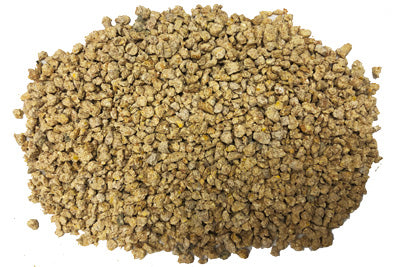
So what's the difference? Reference the chart below to decipher between the different feed types.

Share This Image On Your Site
Next, we'll discuss the differences in chicken feed for each life stage.
What to Feed Chickens

Feeding Chickens
Chickens of different ages need to be fed different food. While the ingredients are pretty much the same, the ratios for certain nutrients vary for each life stage.
Feeding Baby Chicks (0-8 weeks)
From the day chicks hatch until they are eight weeks of age, they are fed starter feed, which is typically 20 - 24% protein. Baby chicks eat about 1 lb. of feed a week.

Feeding Grower Chickens (8-18/20 weeks)
Grower chickens are like teenagers. They need to eat grower feed starting at eight weeks of age until they start laying eggs, which will be around 18 to 20 weeks of age. Grower feed is typically 17% - 18% protein and has higher fat and fiber content than starter and layer feed to support their rapid growth. Growers eat about 1 1/2 lbs. a week.
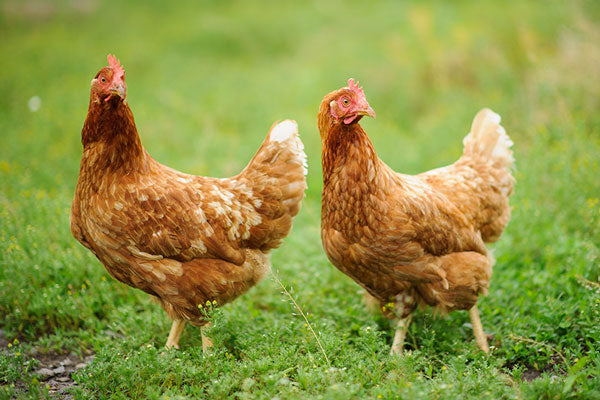
Feeding Layer Chickens (18/20+ weeks)
From the moment hens start laying eggs onward, they should be fed layer feed. Layer feed is 16% - 18% protein and contains more calcium than grower and starter feed to help produce strong eggshells. Laying hens eat about 1 1/2 lbs. to 1 3/4 lbs. a week.
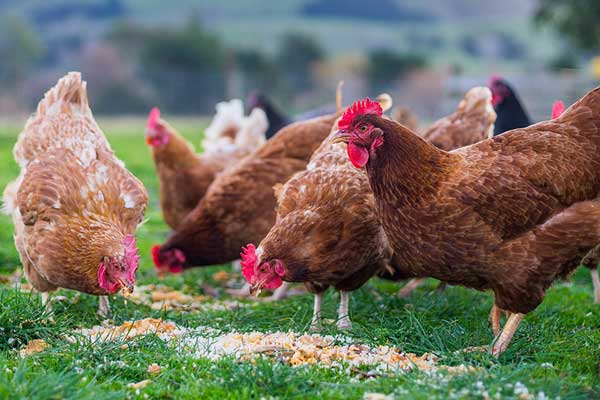
How to Transition Chicken Feed
Whether you are switching feed brands or transitioning your flock from starter to grower or grower to layer, we recommend slowly transitioning your chickens so their bodies have time to adjust to the new feed.
The time it takes to transition can vary, but feel free to reference the chart below and make adjustments as you see fit.
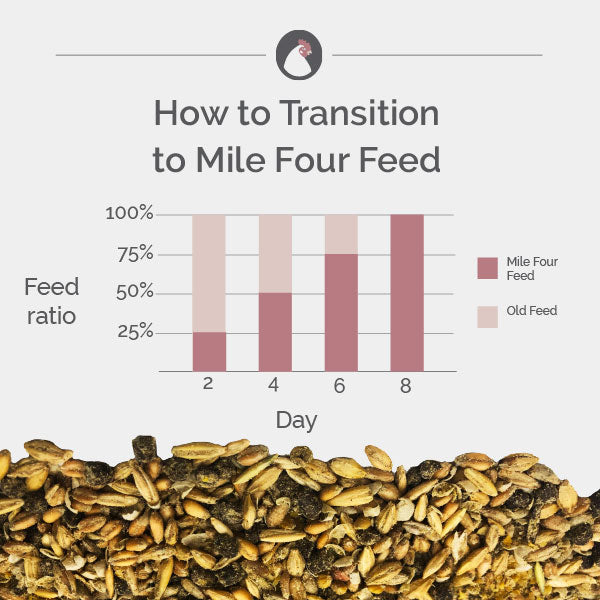
Corn-Free and Soy-Free Chicken Feed
Corn and soy are very common ingredients in chicken feed.
Soybean meal is used for its high protein content and amino acids.
Many people choose to avoid soy and corn in chicken feed due to allergic reactions from eggs laid by chickens on corn and soy diets.
Also, some people chose to avoid soy due to its high levels of phytoestrogens, a plant compound known to disrupt hormone functions and other disruptive health effects.
Corn/soy-free chicken feeds contain field peas and other grains as the source of protein and carbs.
Field peas are a much more nutrient-dense protein source than soy and pose no potential side effects for those eating egg by-products.
This is why the demand for corn/soy-free chicken feed has been growing exponentially, as education on this topic continues to reach more chicken lovers.
Don't worry, Mile Four's corn & soy free feed does contain amino acids, so your chickens aren't missing out on any key nutrients.
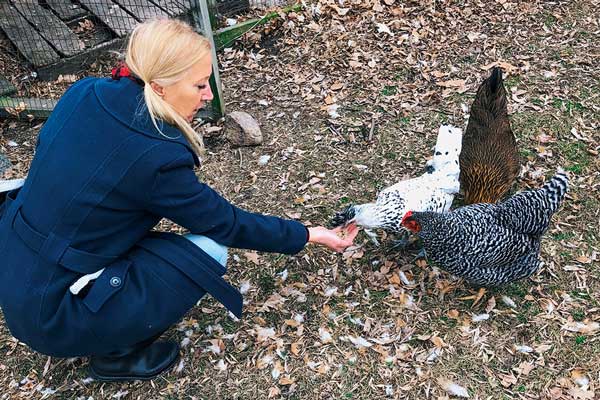
What to Feed a Mixed Flock
So now that you know what chickens eat at different points in their life, what happens if you throw in a few ducks to the mix? Or what happens if you get more chicks in addition to your laying girls? Things can get pretty corn-fusing when it comes to feeding time.
Use this chart below to determine what to feed a mixed flock.

Share This Image On Your Site
In addition to serving your feather squad healthy food (and plenty of water), there are a few super important supplements you should provide to your chickens.
Chicken Supplements

Chicken Grit
Chickens don’t have teeth, so they need to have grit with their food to help them digest it.
Grit is crushed up stone that comes in different sizes for different ages of birds.
The grit is stored in the gizzard to help grind down food correctly. Without grit, the food doesn't get ground up, which prevents nutrients from being absorbed.
Even if your flock is free-range and finding grit in the yard, we recommend supplementing their feed with grit to avoid digestive issues that are common without grit.
Offer your chickens Mile Four Grit free-choice in a separate container. They will instinctively take as much as they need.
Oyster Shell for Chickens
Laying hens need additional calcium to support egg production. Oyster shell is one of the best ways to provide calcium to hens.
All you have to do is put some in a separate dish near their food.
Growers and chicks do not need this extra calcium supplement. In fact, if they eat food with too much calcium in it, this could cause serious damage to their bodies.
If you have growers mixed in with your layers, don't worry. Growers instinctively know not to eat the calcium, just as layers instinctively know they need to eat the extra calcium.
So why exactly do layers need this extra calcium? The eggshells they lay are mainly composed of calcium. If they aren't getting enough calcium, the eggshells become soft and the hen's health is compromised.
There are some people who crush up used eggshells and give those to their chickens as a supplemental source of calcium. The issue with this method is that once they learn to eat their own eggshells, they might start pecking at their freshly laid eggs, which of course we don't want to happen.
Once your chickens start laying eggs, simply pour some Mile Four Oyster Shell in a container for your ladies, and they will take as much as they need.
Additional Chicken Supplements
While oyster shell and grit are high-priority supplements, there are many others available that help promote the health of your chickens.
Electrolytes can be especially beneficial for chickens during hot summers when dehydration can be a real problem.
Other supplements help promote healthy digestion, provide immune system support, and improve egg production and quality.
Below are a few high-quality options we recommend.
Chicken Treats

Chicken Scratch
Scratch is a delicious treat for chickens, but it should not be confused with chicken feed (a complete meal).
Scratch is a great tool to use when trying to get your flock in the coop at night or if you just want to score bonus points with your gals.
Don't go overboard with this stuff! Scratch should be given sparingly and make up no more than 10% of their total diet.
Summer Chicken Treats
Speaking of treats... if you are looking for a good way to cool down your flock on a hot day, try making these frozen treats with your ice cube trays!
These summer treats are especially easy for those who have a garden handy for fresh ingredients. Be sure not to use any rotten or moldy foods, though.

Share This Image On Your Site
Mealworms for Chickens
Mealworms are a high-protein treat for chickens that have many benefits:
- Help grow feathers back after molting
- Boost the immune system in chickens
- Rich with vitamins and minerals
- Supports healthy egg production
Here are just a few of many different results people have experienced with mealworms:
- Hens started laying larger eggs
- Hens lay more often in the winter when mealworms are given in place of bugs and insects
- Getting the chickens in the coop at night has been successful with the help of mealworms
- Chickens went through molting season with less struggle thanks to mealworms
Make sure to not overdo it with these delicious treats. Aim for no more than ten worms per chicken a day.
What Not to Feed Chickens
Since chickens will eat almost anything, it's important not to treat them like a garbage disposal. If you give your chickens leftovers or unused garden goodies, be careful to not feed them certain foods that can be toxic to them.
Reference the list below to make sure you are giving your flock safe options.

Share This Image On Your Site
Now, let's move on to discuss more healthy things to fill your chickens' bellies.
Fermenting Chicken Feed

Benefits of Fermenting Chicken Feed
Download a FREE 'How to Ferment Chicken Feed' PDF.
Fermenting chicken feed is a great way to boost the health of your flock in so many ways. Here are just a few of the benefits:
- Improve digestion
- Absorb more vitamins and minerals
- Strengthen immune system
- Buy less feed
Buy less feed? Yes, chickens will eat 1/4 to 1/3 less feed when they are eating fermented feed because they're getting more nutrients with less feed.
Fermenting feed also solves any issues with the more fine, powdery components of whole grain chicken feed that can be tricky to manage.
The resulting texture of fermented chicken feed is comparable to oatmeal. This new texture prevents feed spillage that you normally experience from whole grains.
It only takes three days to ferment the first batch of chicken feed, and you'll find the process to be fairly easy!
Below is a sample of what the fermentation process looks like from start to finish.
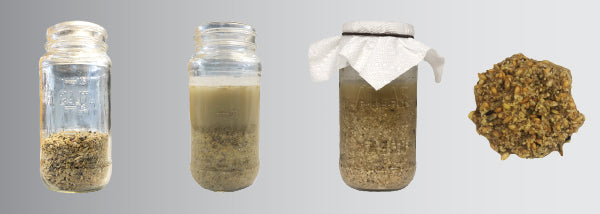
How to Ferment Chicken Feed
Now that you know the benefits of fermenting chicken feed, here's how to do it! We recommend starting with a smaller batch for your first time, then increasing the amount as you see fit. Just make sure to maintain a 1:2 ratio (one part feed, two parts water).

Share This Image On Your Site
Here are a few other tips to keep in mind when fermenting chicken feed:
- If you use a plastic container, make sure it’s BPA-free
- Do not seal the jar with a lid. Must be breathable
- It is normal for bubbles to appear on the surface
- Make sure there is always enough water during fermentation
- Stir up the fermented mixture prior to feeding
- Only serve the amount of feed chickens will eat at one time
- You can reuse the water and add more feed—it will ferment faster with leftover water
If you're wondering why you'd want to ferment chicken feed, check this great article out by Red Feather Farm.
How to Make Chicken Feed

Why Make Your Own Chicken Feed?
Making your own chicken feed may seem like a good idea, but after many people try this, they find that it's cheaper and easier to buy chicken feed.
If you are looking to get 100% control over what your chickens eat, it's important that the right amount of each nutrient is in the mix. Use the chart below to make a complete layer feed.

Share This Image On Your Site
Next, let's talk about free-ranging your chickens. It's often a tough decision to make when raising your flock.
Free Range Chickens

Why Free Range Chickens?
Letting your chickens outside the run to roam freely around the yard allows them to get more exercise, gives them access to nutritious plants and bugs, and is of course super fun for the chickens.
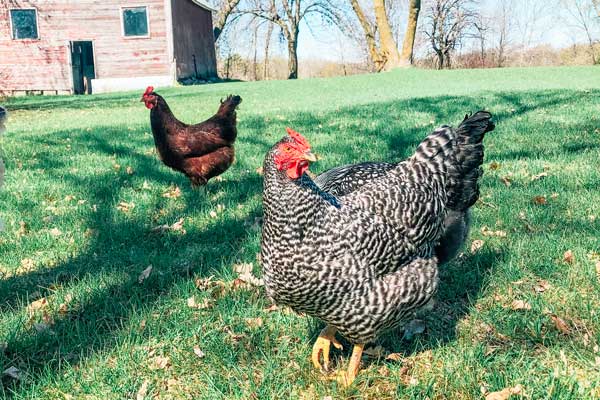
Free-ranging your chickens sounds like a good idea, but unfortunately, it comes with a cost.
Take a look at the pros and cons to help you determine what's best for you, your flock, and your luscious yard.
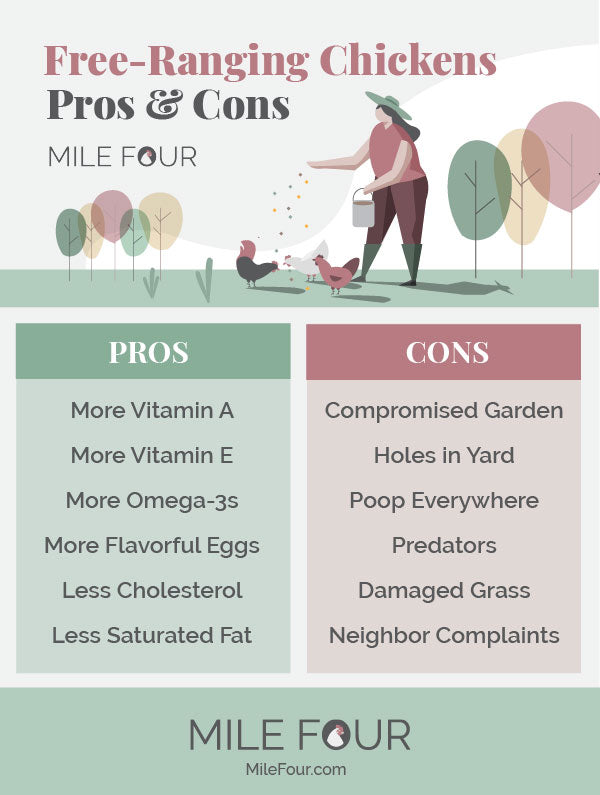
Share This Image On Your Site
It really boils down to healthier eggs and chickens vs. a nice looking property with living chickens. Try it out for a few days to see how it goes. If you can tolerate having a poopy yard/porch and luck out with no predator problems, then free-ranging is perfect for you!
Visit our Free Range Eggs Ultimate Guide to learn more about all things eggs: storage, best layers, egg production, and more!
To conclude this complete chicken feed guide, we will cover chicken feeders and how to properly store your feed.
Chicken Feed Storage & Feeders

Best Chicken Feeders
Now that you understand everything about chicken feed, let's talk about what to put it in.
There are many different types of feeders ranging from simple plastic tube feeders all the way to fancy automatic feeders.
You'll want to make sure that the feeder you have minimizes the amount of feed waste. Chickens love to scoop feed onto the ground to eat. This is called "billing out". While it's entertaining for the chickens, it can be a pain to clean up and a bummer to see feed go to waste. Feeders that will minimize feed wastage have a lip that is rolled or bent in.
A hanging feeder can also help prevent this behavior. Raising the feeder to the height of your chicken's back is recommended.
Make sure most or all of these qualities below are present in your feeder.

Share This Image On Your Site
You can pay as much or as little as you'd like on a feeder. It's not necessarily a "get what you pay for" situation. Cheaper feeders work really well for some people but can be problematic for others. Fancy feeders make life a lot easier for some people but aren't worth the cost for others. It's really about finding what works best for you and your flock.
If you have a smaller flock, we recommend starting out with a plastic tube feeder and seeing how that goes. You might need to add another feeder to make sure at least one-third of your chickens can eat at the same time.
When deciding whether to keep your feeder in the coop or in the run, that is really up to you. Test it out for a few days to see how it goes, but make sure you bring it inside at night in order to avoid attracting predators.
For more information on chicken feeders, check out our DIY Chicken Feeder Guide for plans on how to build your own as well as feeders to purchase online.
Chicken Feed Storage
A good feed storage container will have a snug lid to protect the feed from going stale and keep pests out.
A plastic or galvanized container works great for feed storage. Keep the container in a cool, dry place out of the sun.
If you use a galvanized container, keep your feed in the bag so it doesn't react with the metal.
Below are a few great feed storage options available on Amazon.
Now that you are an expert in chicken feed, go forth and raise some awesome chickens!
Know of something we missed? Shoot us an email at milefour@milefour.com.
Additional Resources:
A great guide from The Happy Chicken Coop.
A very in-depth article from Hobby Farms.
Sources:
"Soy and phytoestrogens: possible side effects". Sergei V. Jargin










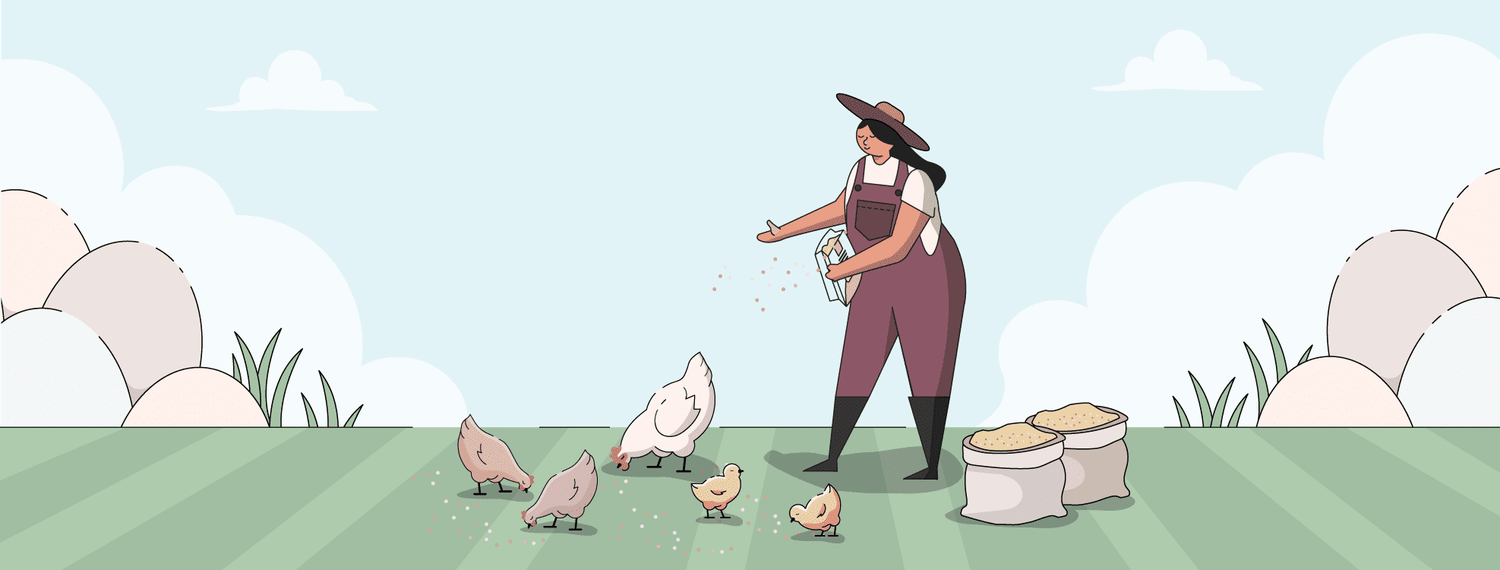
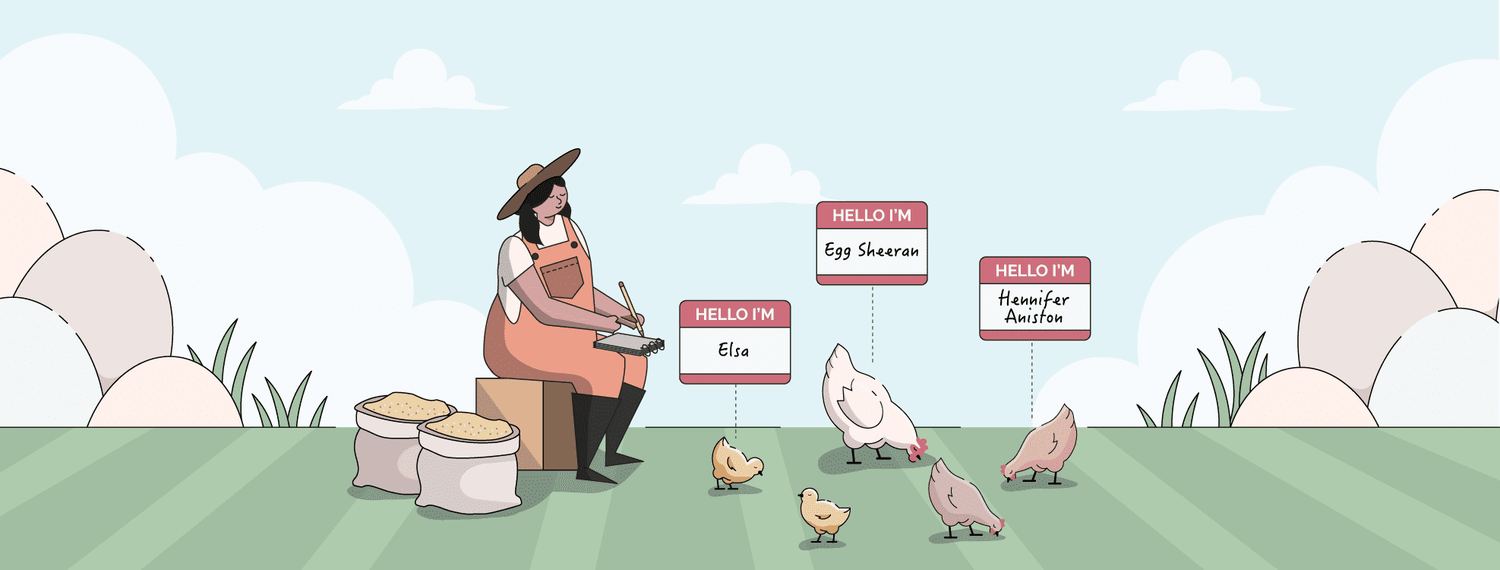
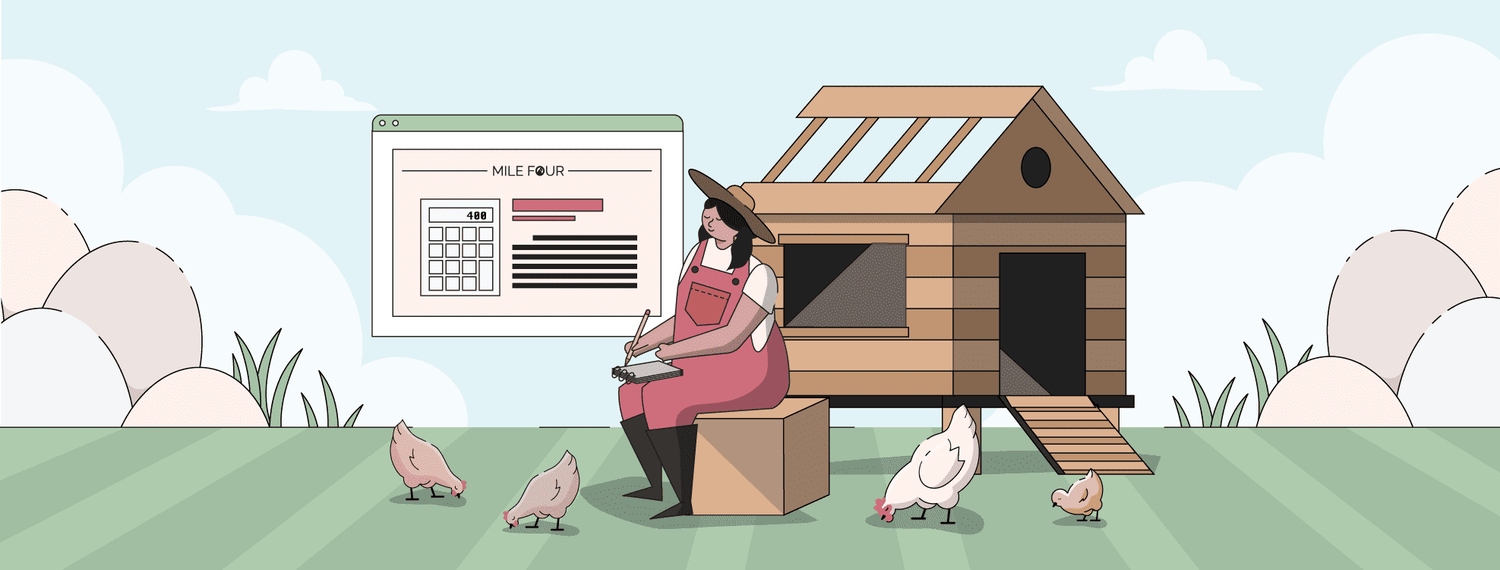
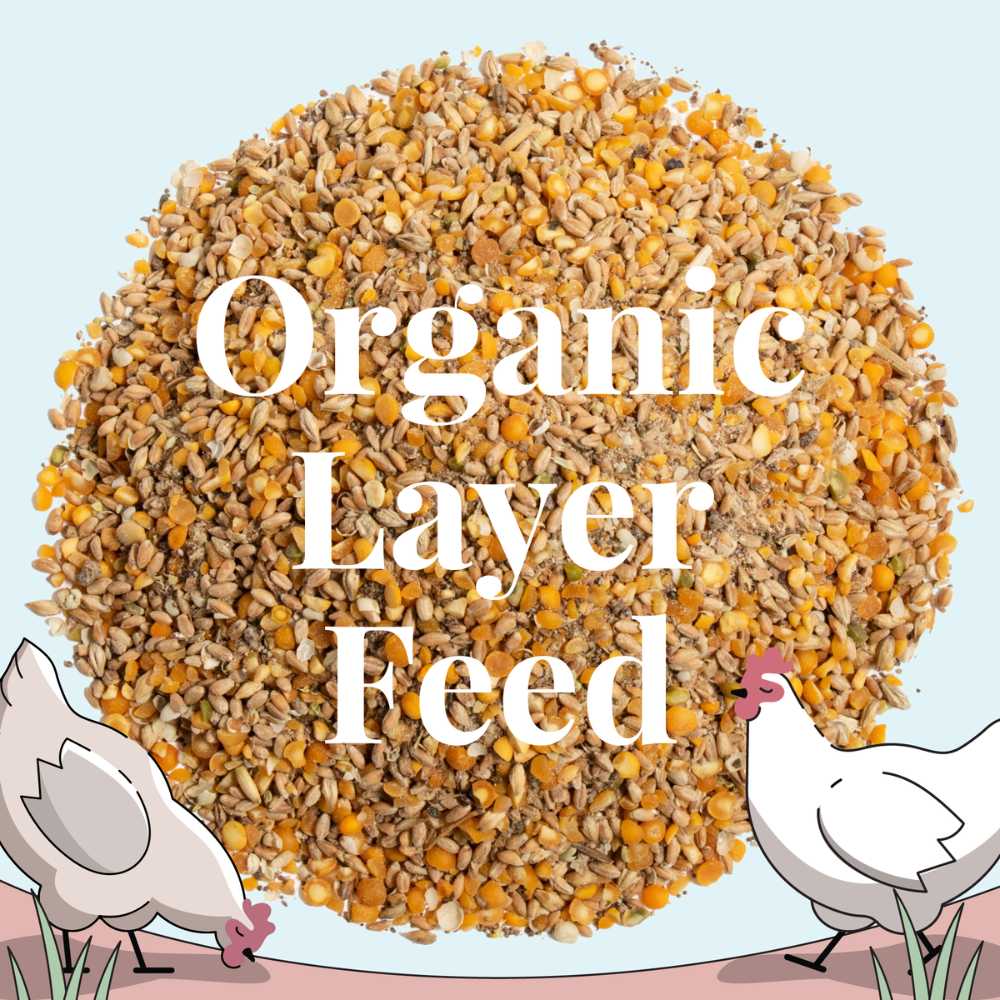
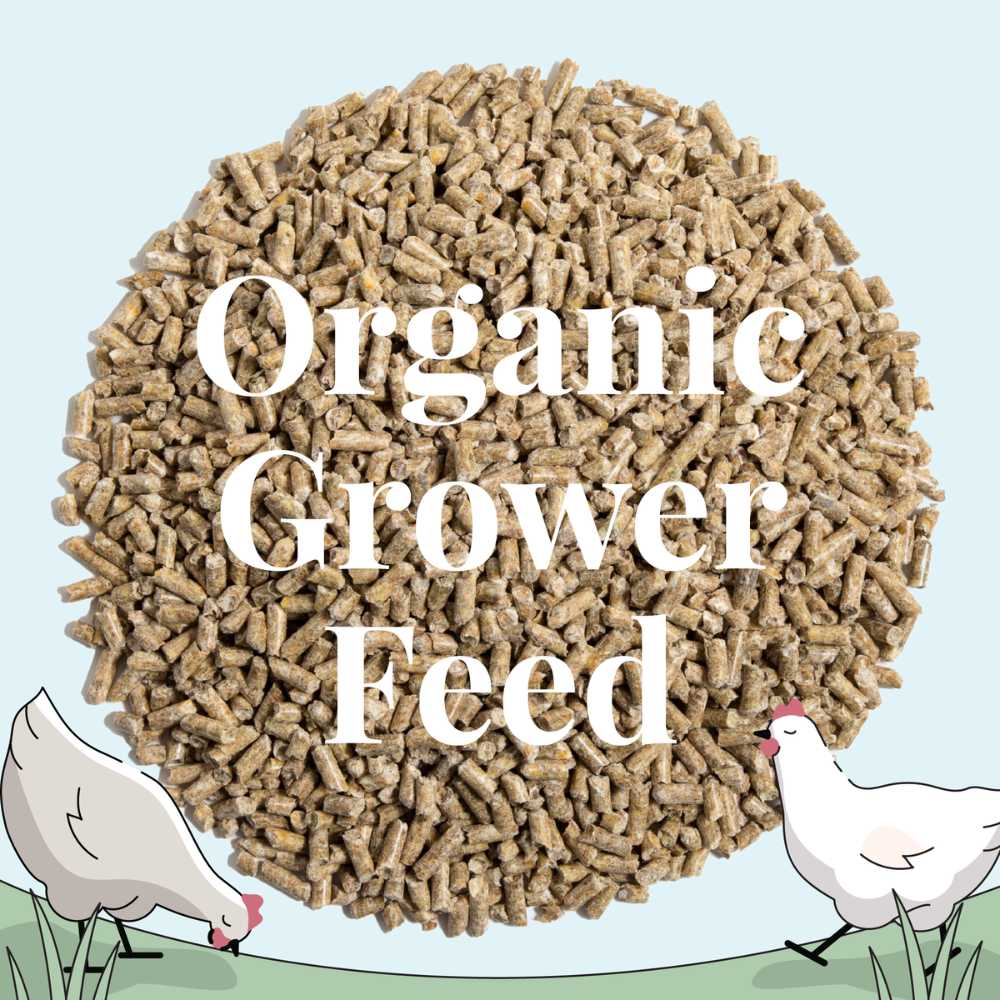
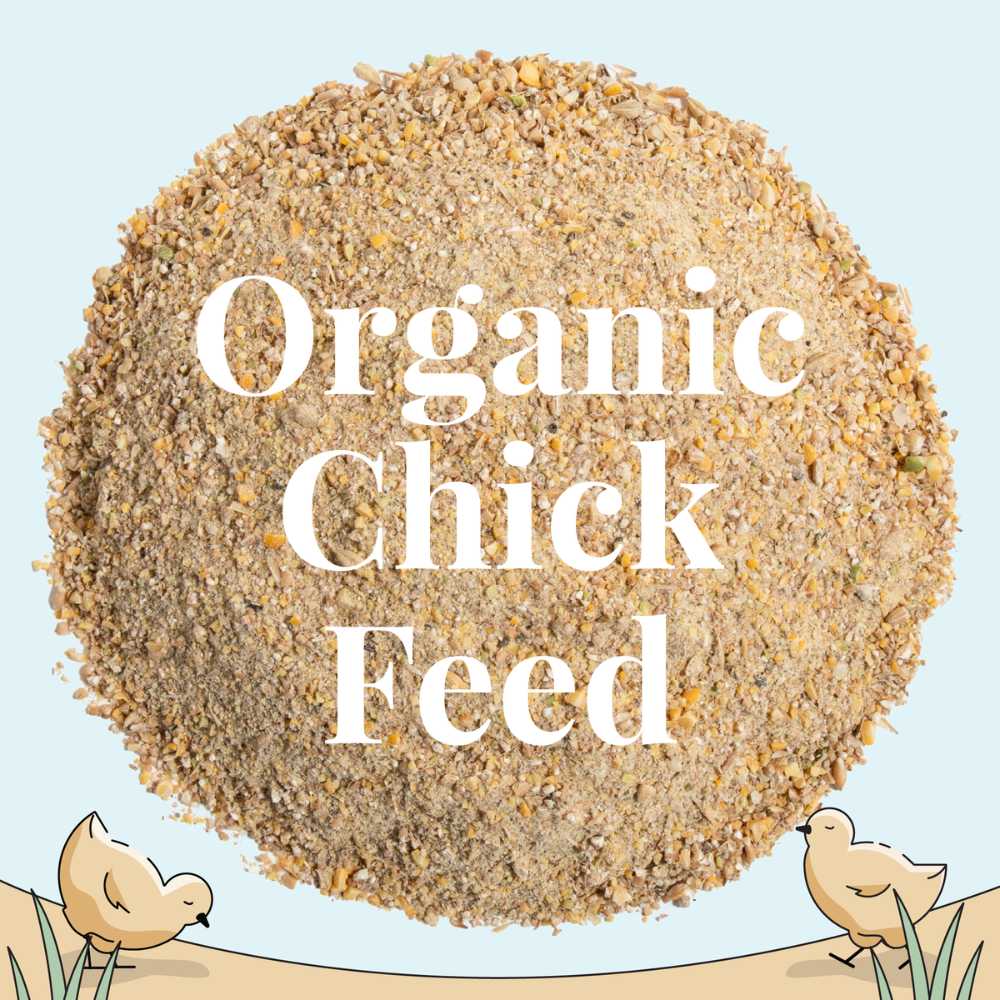
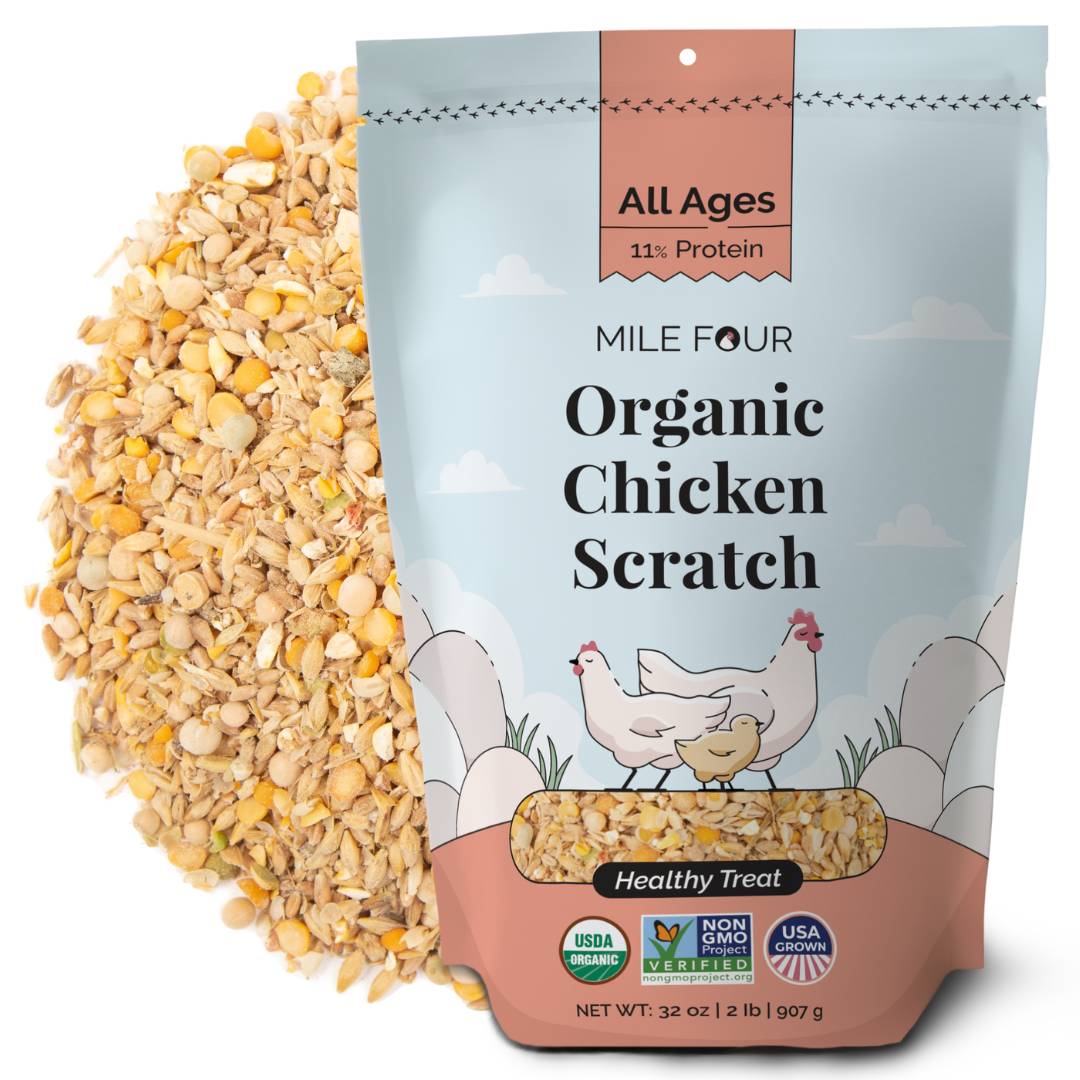
2 comments
Hi,
I was wondering if certain types of the foods you offer are better to ferment than others?
Thank you
Janelle
That wsa very helpfull thank you so much